- Understanding Root Canals
The best way to understand endodontic treatment is by learning the basic anatomy of the tooth. - The Anatomy of a Tooth
Under the hard, white enamel is a layer of tooth structure called dentin. Inside the hard dentin is a space that houses a soft layer of tissue called the pulp. The pulp consists of blood vessels, connective tissue, and nerves. The pulp is housed within the root canal space of a tooth. The front teeth typically have one canal while the back teeth typically have two, three, or four canals. - The Root Canal Process
When this pulp tissue becomes unhealthy and root canal treatment is needed to relieve pain or infection, a small hole is made in the enamel and dentin or the cap (crown) to provide access to the pulp. During root canal therapy, the unhealthy pulp tissue is removed with the use of various endodontic instruments. The root canal(s) is/are then cleaned and shaped. To prevent the penetration of bacteria the root canal(s) is/ are filled with a biocompatible filling material.

Treatments
Root canal therapy
Pre Treatment
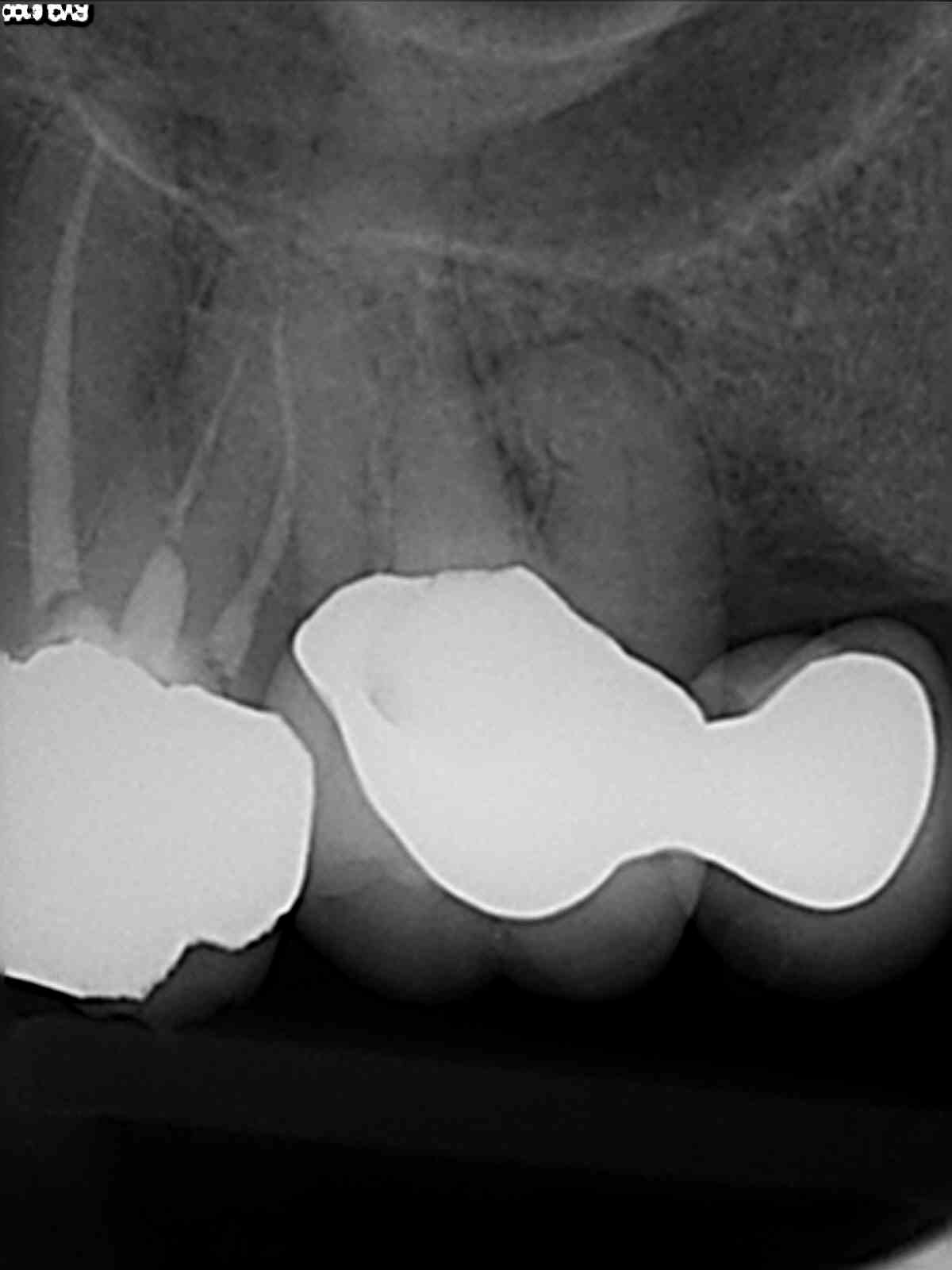
Post Treatment

Endodontic Retreatment
Most teeth that have had root canal therapy, with proper care, can last as long as other natural teeth. Sometimes a tooth that has had root canal treatment fails to heal. This tooth can become painful or diseased months to years after the initial treatment. If this sounds like your tooth, root canal therapy may be able to save your tooth.
You may wonder why your tooth is now diseased or has failed to heal. There are a number of reasons why this can occur:- Tiny or curved canals untreated during the initial root canal treatment.
- Complicated root canal anatomy was not detected during the first root canal treatment.
- The placing of a crown or restoration was not done in a timely fashion.
- Tooth decay extended to the root canal system, infecting it once again.
- Salivary contamination occurred in spite of the crown or restoration/filling.
Pre Treatment
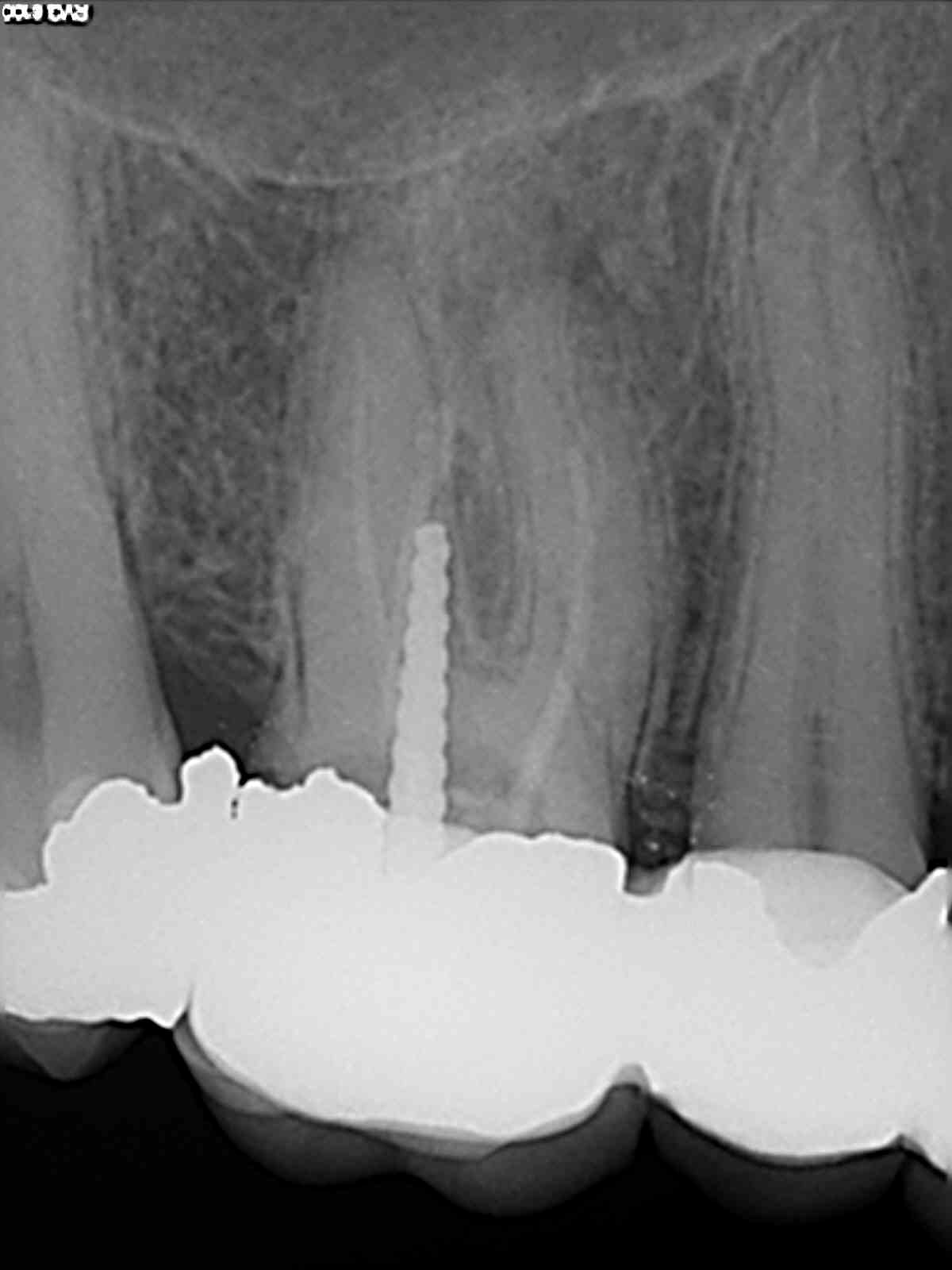
Post Treatment
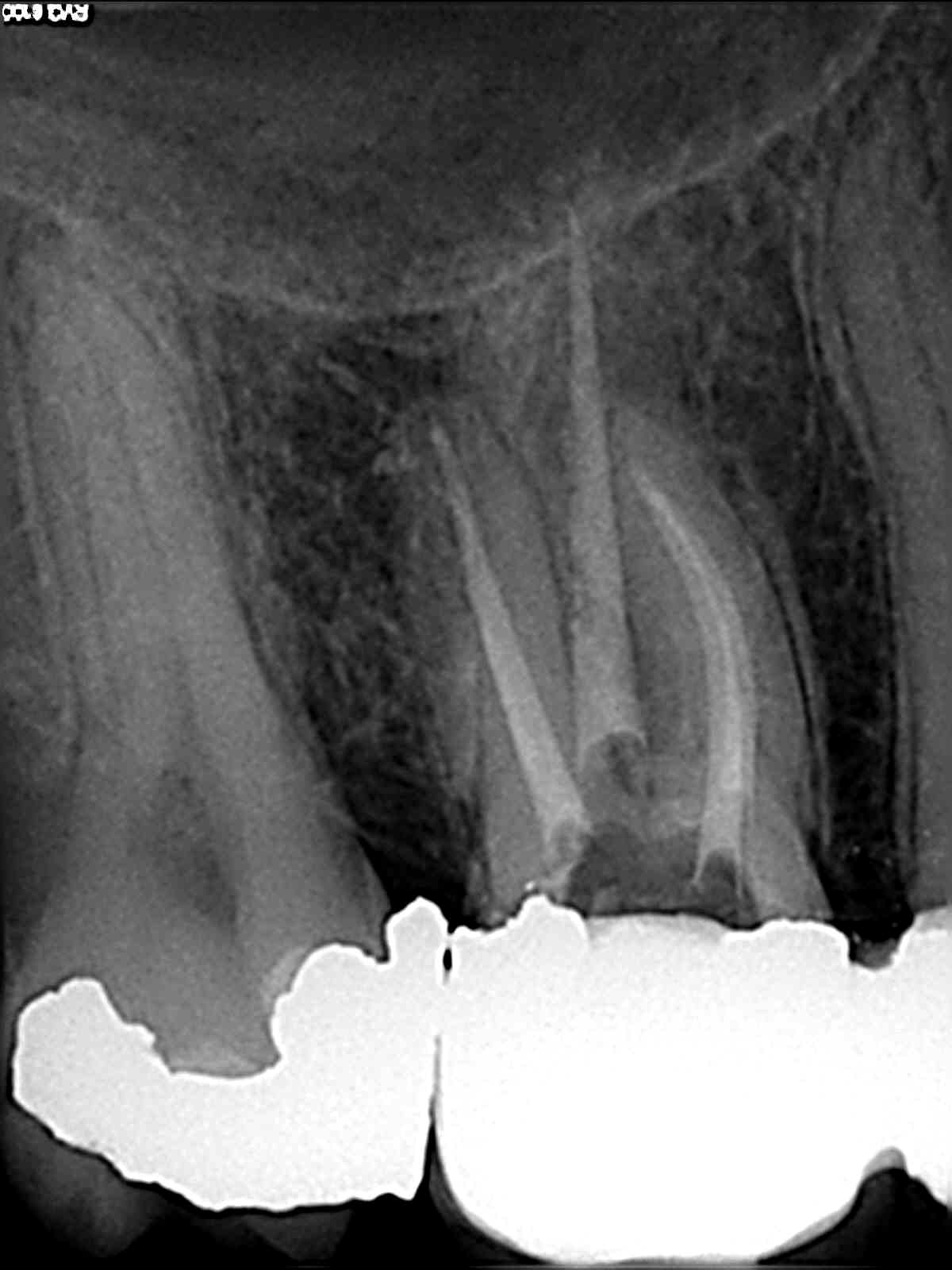
Endodontic Surgery
While most teeth needing root canal treatment will heal with routine endodontic therapy, in some instances a minor surgical procedure is needed to help clear an infection. This procedure is commonly done in the comfort of our office with the use of a surgical operating microscope and other state-of-the-art equipment to ensure the best chance of healing and retention of the tooth.
Pre Treatment
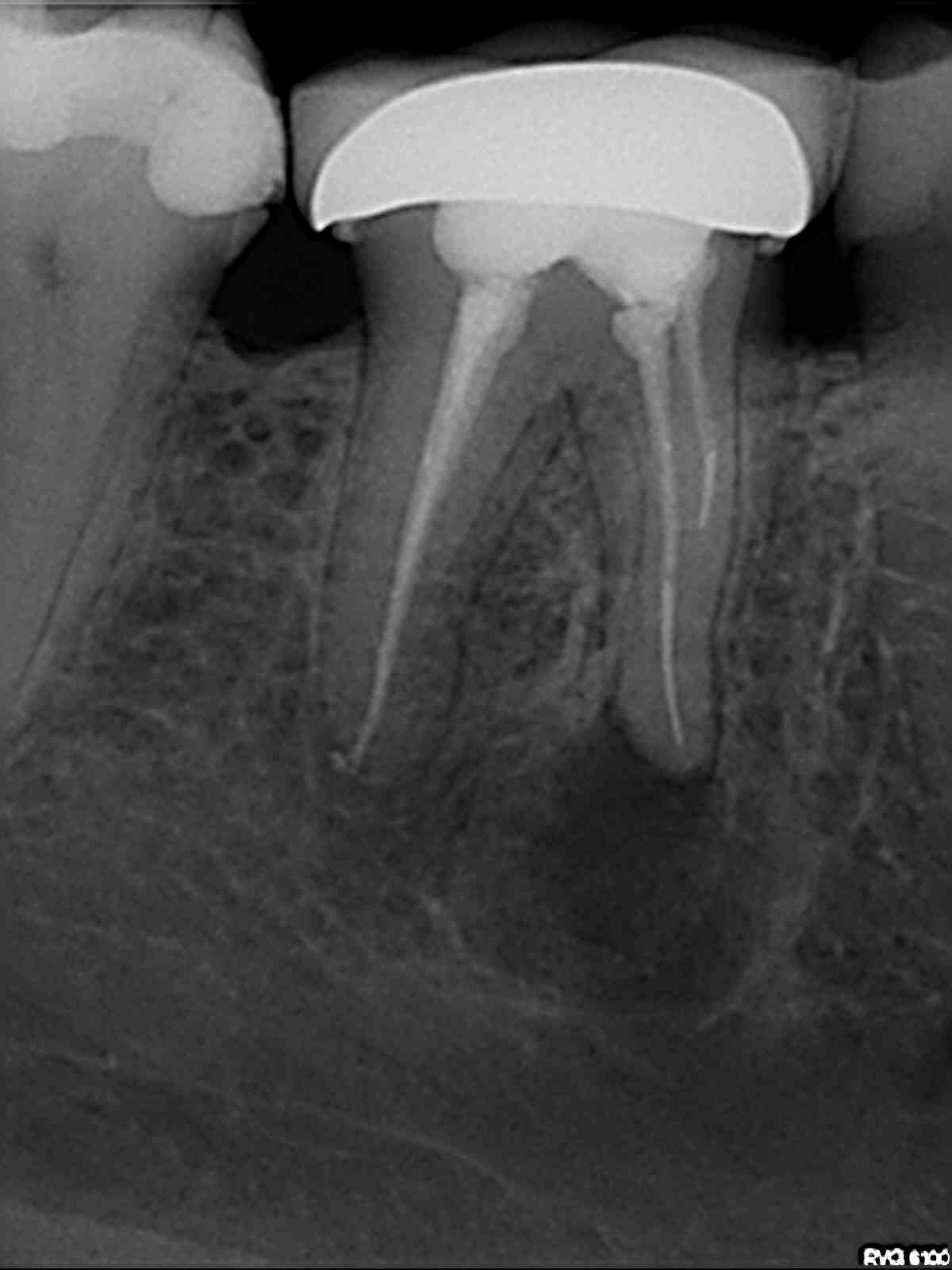
Post Treatment
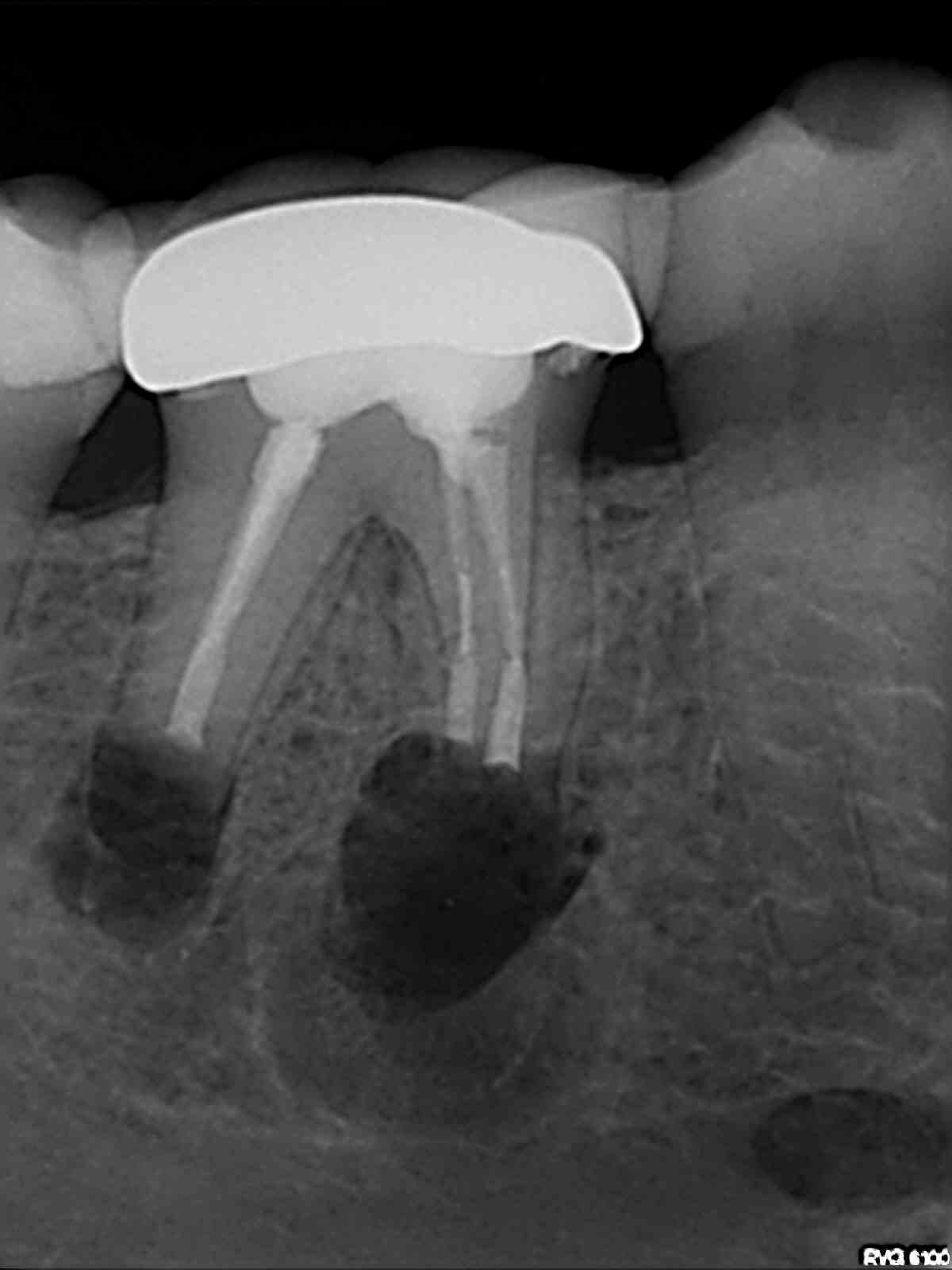
1 Year Recall
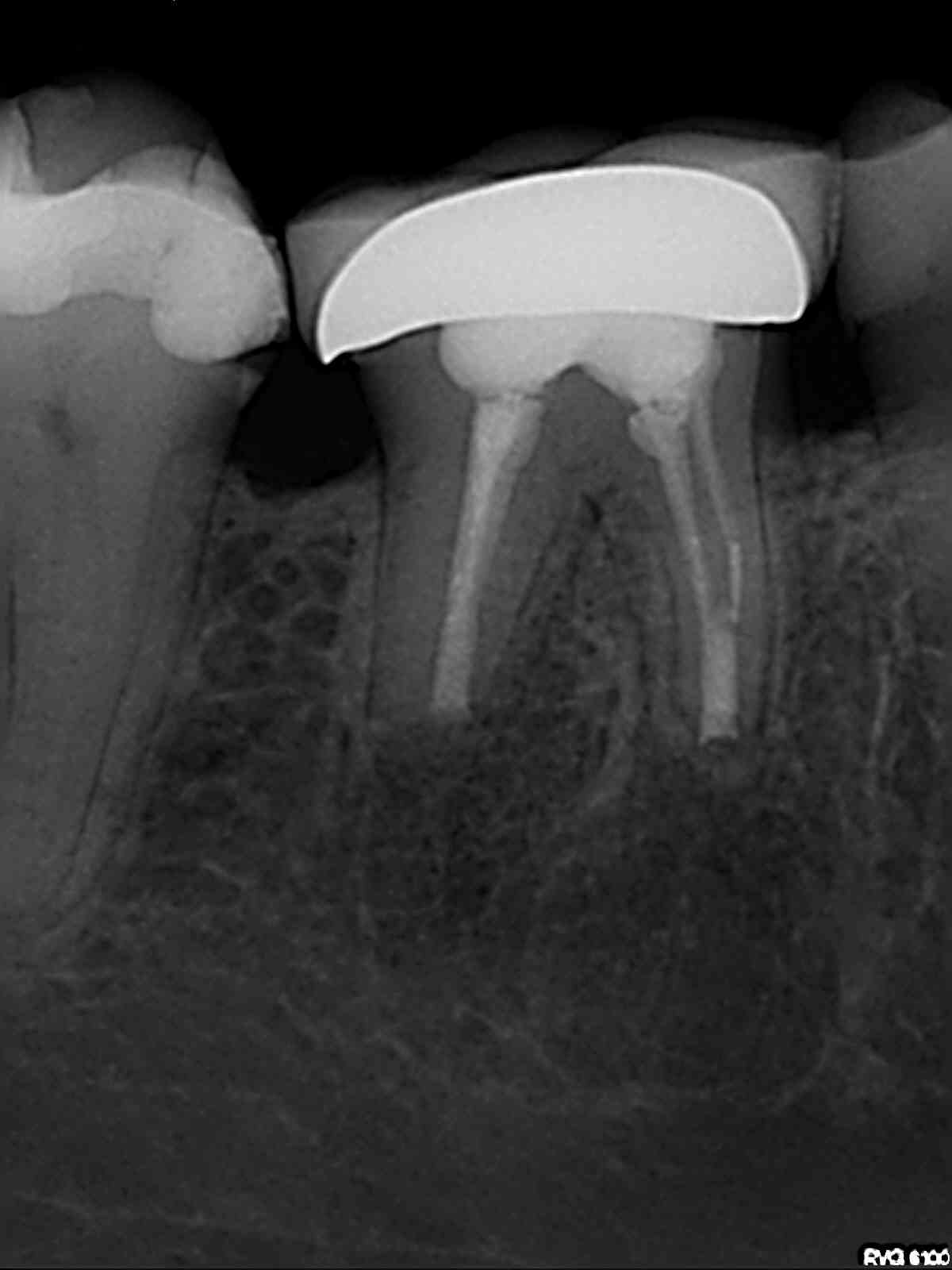
Traumatic Dental injuries
Dental trauma is injury to the mouth, including teeth, lips, gums, tongue, and jawbones. The most common dental trauma is a broken or avulsed tooth. We primarily treat displaced, loosened, or avulsed teeth. Most traumatic injuries occur in children although anyone can have trauma to their teeth. The treatment is determined by the severity of the injury and can range from simply monitoring the traumatized teeth over time to repositioning or reimplanting loose or avulsed teeth. Many traumatic injuries damage the pulp of the tooth. When the pulp becomes damaged or inflamed from the trauma, root canal treatment may be necessary.


